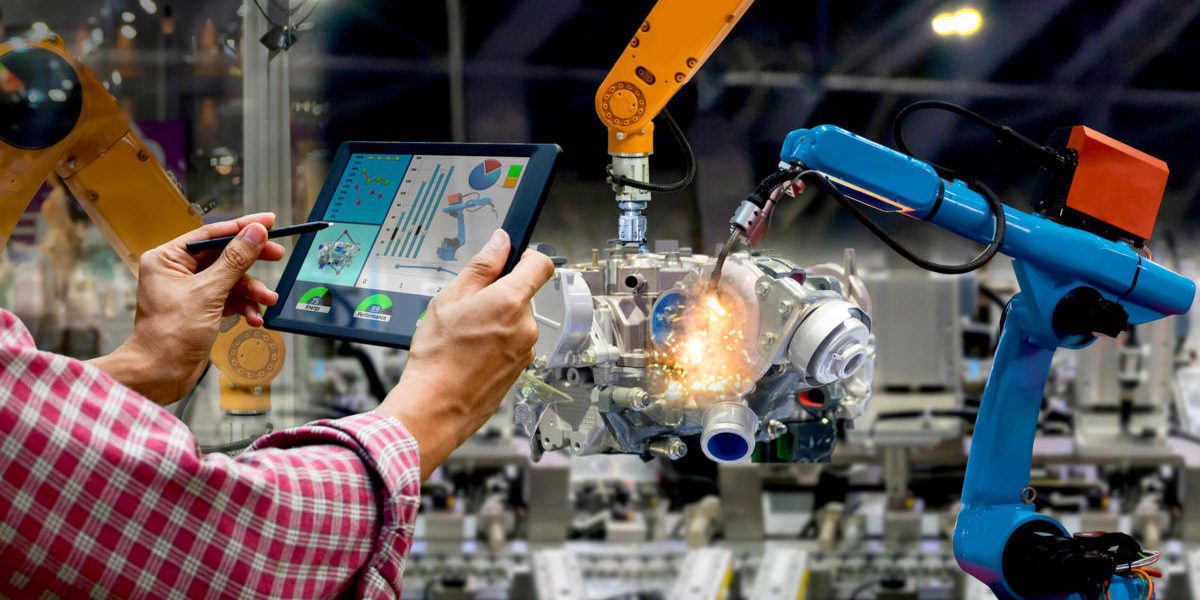Manufacturers are always looking for new ways to improve their bottom line and extend the life of their critical assets. Today’s technologies built on the industrial internet of things (IIoT) now make it easy for manufacturers and service industries to improve operational efficiencies, reduce equipment downtime, ensure the safety of all factories and reduce overall costs.
So, what exactly are Smart Assets?
Assets refer to any machines, tools and equipment used in the production process. Smart Assets, on the other hand, leverage the power of IoT to gather real-time data about the health and performance of these assets. This data provides factory workers with the information they need to make accurate and informed business decisions. Smart Assets allow today’s manufacturers to move beyond the traditional reactive approach to asset management to a proactive approach, allowing for greater ROI.
Let’s explore 5 ways smart assets can benefit businesses
1. Reducing Asset Downtime
When unscheduled and unplanned downtime occurs, this can have negative repercussions not only for business but for customers as well. Smart assets help to avoid this issue by allowing IT operators to analyze real-time data, allowing for greater visibility into the health and status of the equipment. When combined with the right monitoring and analytical tools, the ability to predict equipment failure before it happens can significantly reduce asset downtime.

2. Extending the life of equipment
Let’s face it, heavy machinery especially Industrial, Mining and/or Farming equipment is expensive. These assets require constant maintenance to maintain good working condition. Breakdowns are costly and can negatively impact a businesses’ bottom line. Smart assets can extend the lifespan of equipment allowing IT operators to get real-time insights on usage and accurately predict when scheduled maintenance and/or repairs are needed.
3. Ensuring the health and safety of workers
When it comes to worker safety in the manufacturing industry, one of the most significant risk areas is onsite inspections. Oftentimes, factory workers need to inspect assets that are in hazardous or difficult to access environments that place their health and safety at risk and can potentially lead to injuries, or worse, fatalities. By using sensors and data analytics to monitor and analyze the different parameters such as sound, frequency, vibration and temperature within a given machine, IIoT systems are now able to trigger maintenance alerts to allow IT operators to respond to existing issues and accurately forecast when a repair is needed avoiding any unnecessary onsite inspections. This results in less downtime for the business and also provides an added layer of assurance and safety for equipment operators.
4. Improving equipment efficiency
Data provided by smart assets can offer valuable insight into equipment usage, overall performance and production. With the right monitoring software, businesses can easily identify bottlenecks and inefficiencies, streamline processes and improve equipment effectiveness. Real-time metrics from any smart asset allows IT operators to remotely monitor assets and take proactive measures to identify which assets require maintenance and/or repairs. The benefit is improved production time and equipment efficiency, allowing for greater cost savings.
5. Improves Customer Satisfaction
Customer satisfaction and asset reliability go hand-in-hand. In order to improve customer satisfaction and retain customer loyalty, organizations need to work towards avoiding unexpected (and costly) downtime, managing asset risks and maintaining assets before problems occur. In conjunction with smart sensors and devices, automated asset monitoring and tracking allow organizations to get real-time data and gain real-time visibility into the operational status. This enables them to quickly respond to various conditions and identify problems before they occur.
Clearly, smart assets offer the potential for greater productivity, improved decision making, reduced costs and better customer relationships. In addition to the above mentioned, today’s enterprises also need the right connectivity protocol and it’s no surprise that Bluetooth is the wireless technology of choice. However, for a connectivity protocol like Bluetooth to meet the current demands for today’s enterprises and large scale deployments, it must move beyond the limitations of short-range and one-to-one connectivity. Cassia Networks offers a range of Bluetooth IoT products and solutions to provide the flexibility and scalability needed for today’s enterprises to remain competitive and achieve greater cost savings. By adding long-range, multiple device connectivity combined with big data and edge processing capabilities, today’s IoT solution providers have the competitive advantages they need to succeed.
Interested in learning more about Cassia’s enterprise IoT products and solutions? Click here to get a free demo today!








